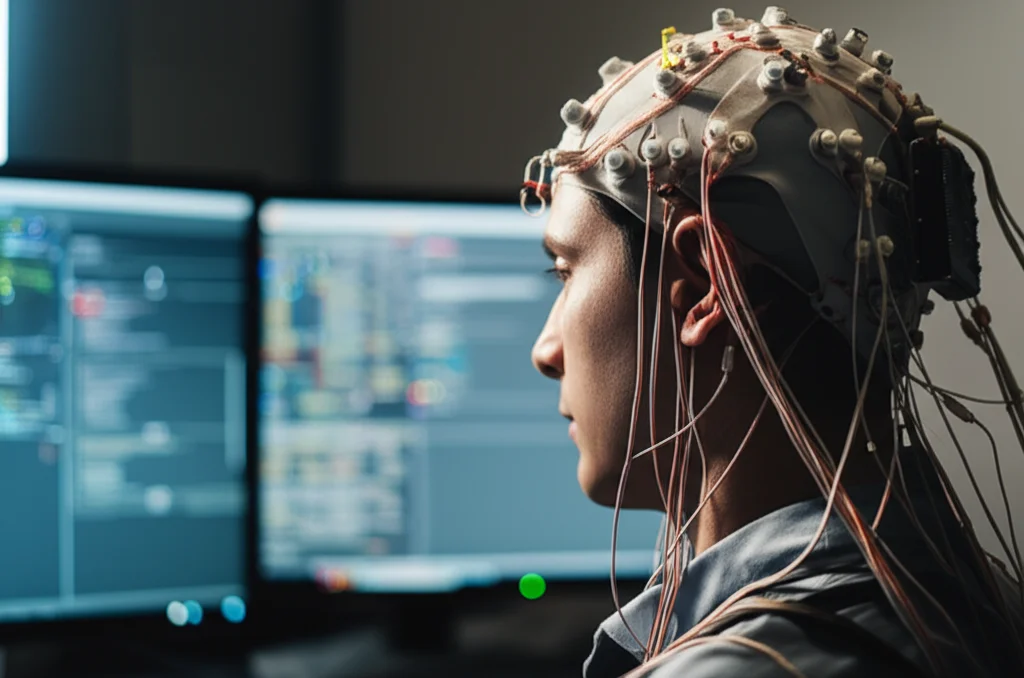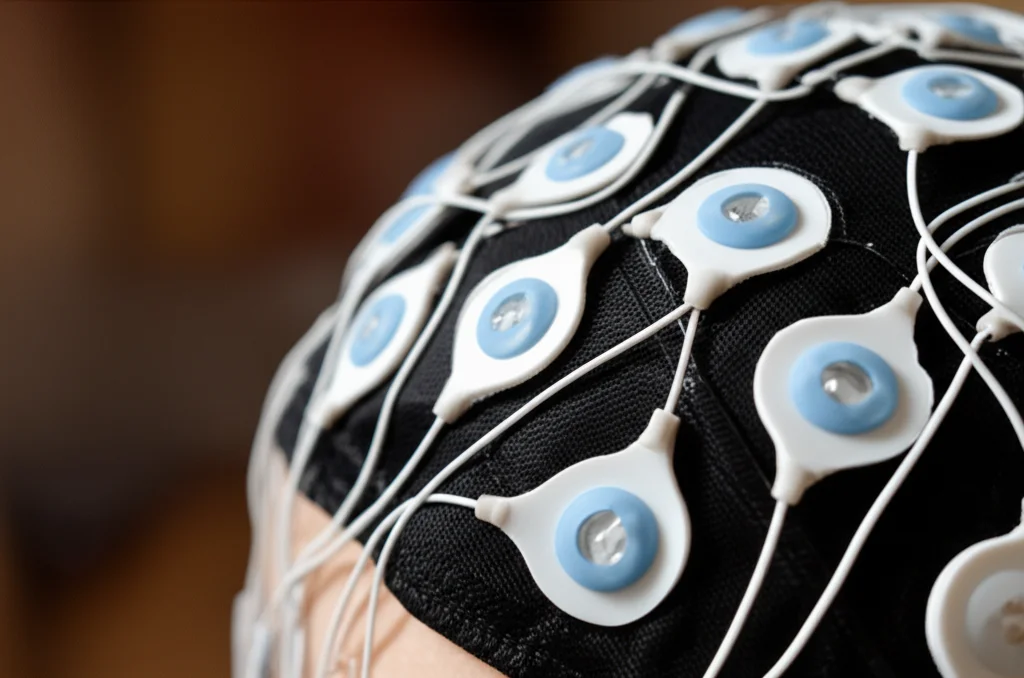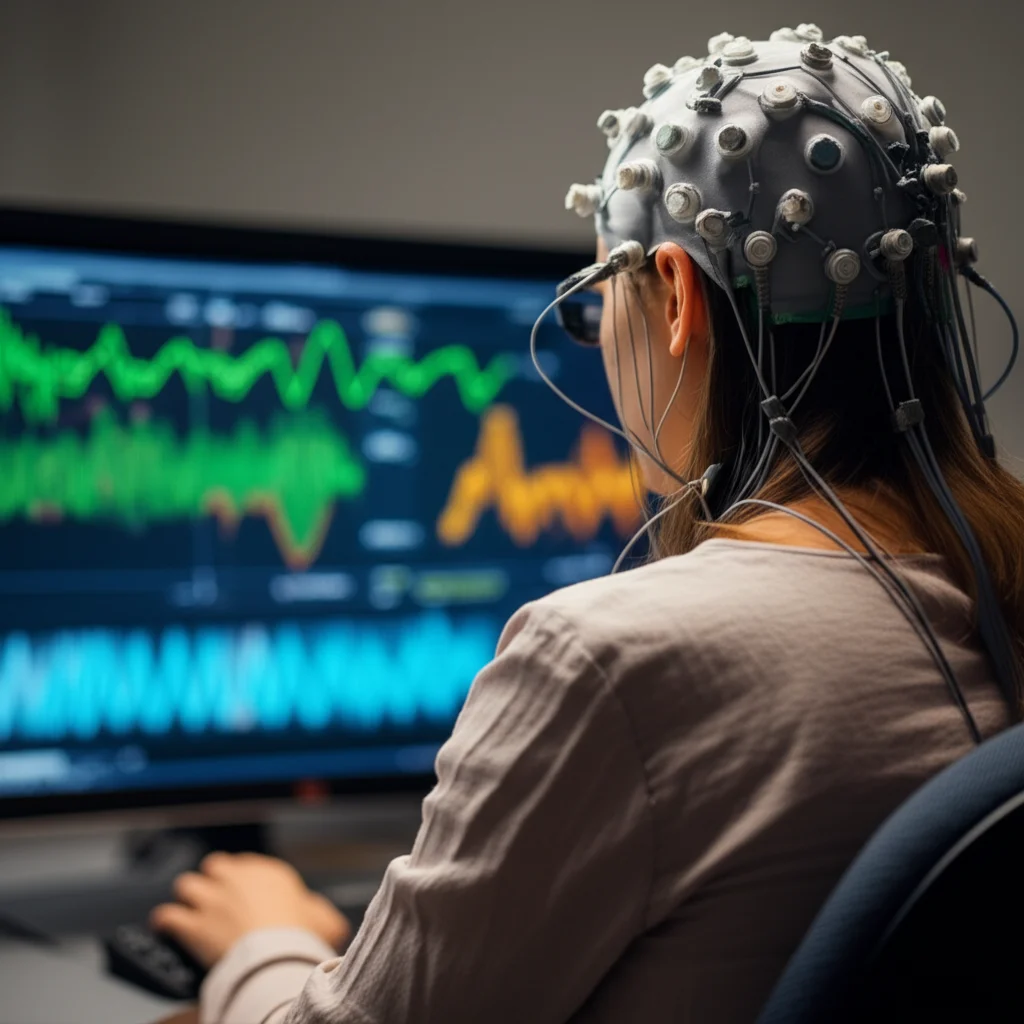The Brain’s Secret Prep: How Theta Waves Help in Autism’s Executive Challenges
Hey there! So, I stumbled upon this really fascinating study, and I just had to share what I learned. It dives deep into how the brains of people with autism handle tough mental tasks, specifically focusing on something called executive function. You know, that set of skills that helps us plan, focus, remember instructions, and juggle multiple things at once? It’s pretty crucial for navigating the world, and sometimes it works a bit differently in autism.
Understanding Executive Function in Autism
I’ve always been curious about the diverse ways our brains are wired. Autism is a condition that affects how people interact socially and can involve specific interests and routines. What’s also often part of the picture, though not always in the diagnostic criteria, are differences in executive function. This isn’t about being ‘better’ or ‘worse’, but about using different strategies or facing unique challenges when it comes to things like:
- Working memory (holding and manipulating info temporarily)
- Inhibition (controlling impulses)
- Error monitoring (spotting and learning from mistakes)
- Cognitive flexibility (switching between tasks or ideas)
Think about trying to switch gears quickly when something unexpected happens, or keeping track of a complex set of instructions. If executive function is a bit rigid, these situations can be tougher. This study wanted to get a closer look at the *neural* side of these differences – how the brain activity itself reflects these processes.
Enter Brainwaves: Theta and Alpha
Our brains are buzzing with electrical activity, and we can measure this using EEG (electroencephalography). Different patterns of activity, or ‘brainwaves’ (like theta and alpha), are linked to different mental states and processes. Midfrontal theta waves, found towards the front and center of your head, are like the brain’s command center for executive function. They pop up when you’re:
- Monitoring for errors
- Using working memory
- Engaging cognitive control (trying to keep things on track)
Typically, you see a burst of midfrontal theta right after someone makes a mistake. It’s like the brain saying, “Whoops! Let’s pay attention and fix that!” But interestingly, some research suggests theta might also be important *before* an action, helping us prepare and stay controlled in tricky situations.
Then there’s posterior alpha activity, usually found towards the back of the head. Alpha is a bit counter-intuitive; it’s often highest when you’re relaxed or not paying close attention. When you start focusing on a task, alpha activity tends to decrease (this is called alpha suppression). So, alpha can be seen as an inverse measure of how much attentional effort your brain is putting in.
The High-Stakes Spelling Bee (with a Twist)
To really challenge executive function and see these brainwaves in action, the researchers designed a super engaging task. They used a Brain-Computer Interface (BCI). Now, BCIs are cool – they translate your brain signals into commands. Originally for communication, they’re also great for studying brain function because they demand a lot of attention and mental effort. This particular BCI was a ‘speller’ – you had to use your brain activity to select letters on a screen.
The task itself was a reverse pseudoword spelling challenge. Participants saw a made-up word (like “FRIMADO”), had to mentally reverse it (“ODAMIRF”), and then ‘spell’ it out letter by letter using the BCI speller. This task is a workout for:
- Working Memory: Holding the word and its reversed version in your head.
- Error Monitoring: Constantly checking if you’re reversing it right and if the BCI is selecting the letter you intended.
They made it even trickier by using both five-letter and seven-letter pseudowords (different cognitive loads) and looked at different phases: the preparation time before the word appeared, the instruction period (seeing the word), the encoding period (mentally reversing it), and the feedback period (seeing which letter the BCI selected).
They compared a group of autistic adults with a group of non-autistic adults, measuring their EEG throughout. What I love about this approach is how it pushes the brain and allows researchers to see how different people tackle the same challenge.

Who Participated? And Could Everyone Use the BCI?
The study included autistic and non-autistic adults. The researchers took care to make the environment comfortable, conducting sessions in familiar rooms at support associations (APPDA). This is a really important detail, as comfort can significantly impact participation and performance, especially for individuals who might have sensory sensitivities.
A key part of using a BCI is calibration – training the system to understand your brain signals. They used a standard P300-based speller, which relies on a specific brain response (the P300 wave) that occurs when you see a rare, relevant stimulus (like the letter you want to select flashing). Most participants, both autistic and non-autistic, were able to use the BCI effectively, with similar overall accuracy.
However, they did find that a few autistic participants couldn’t interact with the BCI, mostly due to calibration issues. Interestingly, these participants had lower FSIQ (Full-Scale Intelligence Quotient) scores. This suggests that for this particular BCI task, there might be a minimum cognitive threshold needed for successful interaction. But for those who *could* use it, their BCI performance wasn’t linked to their FSIQ, which is good news.
Performance: Similar Results, Different Brain Paths?
Here’s one of the first interesting findings: both groups performed similarly on the task! The error rates were comparable, and as you’d expect, everyone made more mistakes with the longer, seven-letter pseudowords compared to the five-letter ones. Practice didn’t seem to significantly reduce errors over the session, which the authors suggest might be a balance between learning the task and getting fatigued.
This finding of similar performance, despite potential underlying differences in executive function, is really significant. It allows researchers to look at *how* the brain achieves that performance, rather than just comparing who made more errors. It sets the stage for exploring different *strategies* or *neural recruitment patterns*.
The Preparatory Period: Where the Magic Happens
Now, let’s get to the juicy brainwave findings! The researchers looked closely at the theta and alpha activity during the pre-response stage – the preparation, instruction, and encoding periods *before* participants started spelling with the BCI.
Increased Preparatory Theta in Autism
This was a major reveal. The study found that autistic participants showed significantly *higher midfrontal theta power* during the initial *preparation* period compared to the non-autistic group. Remember how theta is linked to cognitive control and getting ready for action? This increased theta before the task even fully began suggests that the autistic participants might be engaging these control mechanisms more strongly right from the start.
I interpret this as a potential *compensatory mechanism*. It’s like their brain is saying, “Okay, this is a challenging task. I need to really ramp up my focus and control *now* to make sure I get this right.” They might be putting in extra neural effort upfront to achieve the same level of performance as the non-autistic group, who might not need that same level of intense preparation.
Interestingly, this difference in theta was most prominent during the initial preparation. As the task moved into the instruction and encoding phases, the theta activity patterns between the groups became more similar. This suggests the heightened theta is specifically tied to the *anticipatory* phase of a demanding task.
Alpha’s Role: Attention and Effort
What about alpha waves? The study found that, overall, autistic participants had *higher posterior alpha power* across the pre-response periods compared to the non-autistic group. Since high alpha is linked to less focused states, this *could* suggest some underlying differences in attentional processing or a higher baseline level of alpha activity.
However, there’s a twist! Both groups showed the expected *decrease* in alpha power (suppression) as they moved from the preparation phase (more like rest) to the encoding phase (high attentional demand). But the autistic group showed an even *larger* decrease in alpha from preparation to encoding. This greater alpha suppression is thought to reflect a *higher allocation of attentional resources* to the task.
So, combining the theta and alpha findings, here’s a possible picture: Autistic individuals might start with a higher baseline alpha (perhaps reflecting some attentional differences), but they compensate by significantly increasing preparatory theta (cognitive control) and then putting in *more attentional effort* (larger alpha suppression) during the task itself to match the performance of their non-autistic peers. It’s like they’re using a different, perhaps more effortful, neural route to get to the same destination.

Processing Errors: System vs. Self
The study also looked at brain activity during the feedback period, right after the BCI selected a letter. This is where error monitoring comes into play. They compared brain responses when the BCI correctly selected a letter versus when it made a mistake (a ‘system error’) or when the participant had made a mistake that the BCI then correctly spelled based on their input (‘participant error’).
Interestingly, both groups showed a similar increase in midfrontal theta and posterior alpha power *following system errors* compared to correct selections. This aligns with previous research showing theta increases when we detect errors, even if they’re not our own (like observing someone else’s mistake or getting feedback about an error). It seems the brain’s error detection system for external errors works similarly in both groups.
However, they didn’t find a significant difference in theta between correct letters and *participant errors* in this study. The authors suggest this might be because system errors were more obvious and frequent in this task. Participant errors (like reversing the word incorrectly in your head) might only become clear at the very end when the final word is shown, not necessarily letter by letter during the BCI spelling. This highlights how the *type* and *salience* of an error can affect the brain’s response.
Feasibility and Future Steps
Beyond the brainwave findings, the study successfully demonstrated that this complex BCI-based task is feasible for many autistic individuals, particularly those with an FSIQ above a certain threshold. This is exciting because it opens the door for using such tasks not just for research, but potentially for therapeutic interventions.
The findings about distinct neural recruitment patterns – the increased preparatory theta and altered alpha dynamics – are particularly promising targets for future work. Could training individuals to modulate these specific brainwave patterns through neurofeedback improve executive function skills? The authors suggest this is a real possibility, building on previous neurofeedback research in both autistic and non-autistic populations.
Of course, like any good study, this one has limitations. The sample size wasn’t huge, and there was only one female autistic participant who couldn’t complete the BCI part, making it hard to draw conclusions about sex differences. Future research will need larger, more diverse samples and perhaps explore different levels of cognitive load more systematically.

My Takeaway
What I take away from this is a deeper appreciation for the incredible adaptability of the brain. This study suggests that autistic individuals, while achieving similar performance on a demanding executive function task, might be doing so by engaging different neural strategies, particularly during the crucial preparatory phase. The increased preparatory midfrontal theta and the specific pattern of posterior alpha modulation seem to point towards a compensatory effort involving heightened cognitive control and attentional resource allocation.
It’s not about a deficit in performance, but potentially a difference in the *path* taken to get there. Understanding these neural signatures is key to developing targeted support and interventions, like BCI-based brain training, that could potentially help individuals optimize these compensatory mechanisms or develop alternative strategies. It’s another piece of the puzzle in understanding the rich diversity of human cognition.
Source: Springer







